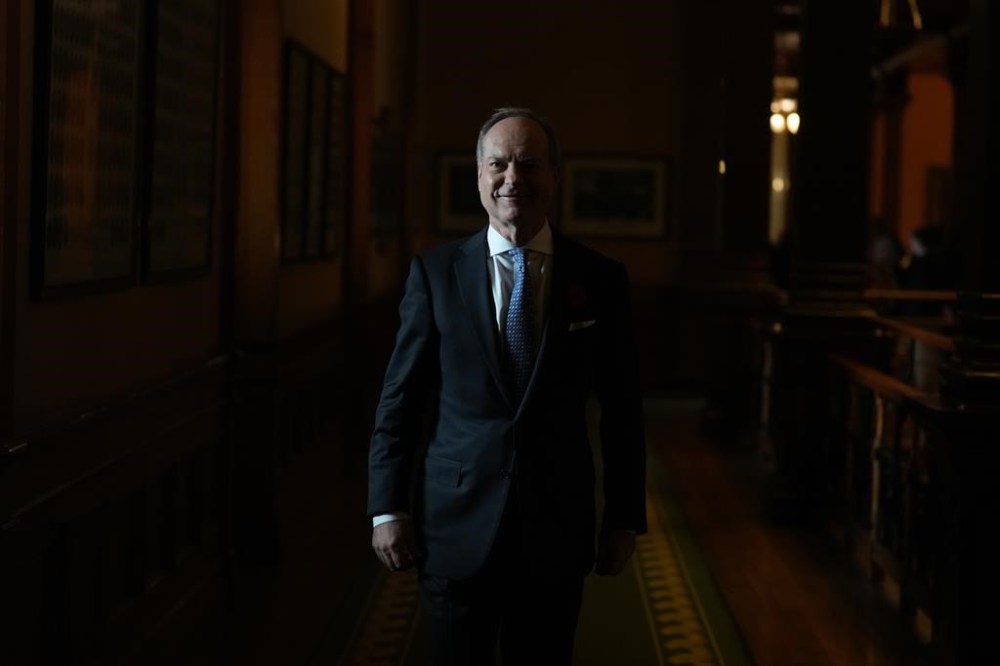Ontario projecting $4.5B deficit this year in third-quarter finances
Advertisement
Read this article for free:
or
Already have an account? Log in here »
To continue reading, please subscribe:
Monthly Digital Subscription
$0 for the first 4 weeks*
- Enjoy unlimited reading on winnipegfreepress.com
- Read the E-Edition, our digital replica newspaper
- Access News Break, our award-winning app
- Play interactive puzzles
*No charge for 4 weeks then price increases to the regular rate of $19.00 plus GST every four weeks. Offer available to new and qualified returning subscribers only. Cancel any time.
Monthly Digital Subscription
$4.75/week*
- Enjoy unlimited reading on winnipegfreepress.com
- Read the E-Edition, our digital replica newspaper
- Access News Break, our award-winning app
- Play interactive puzzles
*Billed as $19 plus GST every four weeks. Cancel any time.
To continue reading, please subscribe:
Add Free Press access to your Brandon Sun subscription for only an additional
$1 for the first 4 weeks*
*Your next subscription payment will increase by $1.00 and you will be charged $16.99 plus GST for four weeks. After four weeks, your payment will increase to $23.99 plus GST every four weeks.
Read unlimited articles for free today:
or
Already have an account? Log in here »
Hey there, time traveller!
This article was published 12/02/2024 (663 days ago), so information in it may no longer be current.
TORONTO – Ontario is projecting that it will end this fiscal year with a $4.5-billion deficit, while also so far hanging onto a large contingency fund.
Finance Minister Peter Bethlenfalvy released the province’s third-quarter finances Monday, the last major fiscal update he’s set to provide before introducing the next budget by the end of March.
The current deficit projection for 2023-24 is $4.5 billion, which is $1.1 billion lower than the forecast in Bethlenfalvy’s fall economic statement, but still significantly higher than the $1.3 billion he was eyeing at the time of last year’s budget.

Bethlenfalvy said the $1.1-billion improvement is due to higher revenue, including money from taxes and transfers from the federal government, and lower interest costs on the province’s debt due to rosier interest rate forecasts.
“I’m pleased to report that inflationary pressure has eased somewhat on households across the province, providing some much needed relief to millions of Ontarians and their families,” he said at a news conference.
“That said, high interest rates from the Bank of Canada as well as uncertainty around consumer price inflation continue to pose risks to Ontario’s economic outlook.”
Ontario has added some new spending since the fall economic statement, including $1.7 billion to the health sector and more than $700 million in supports for the city of Toronto.
Bethlenfalvy did not provide an exact amount, but said part of that $1.7 billion was being used for retroactive payments for health-care workers to compensate them for the government’s wage restraint legislation known as Bill 124.
The $1.7 billion, however, does not include funding to help hospitals that are warning of facing operating deficits, but Bethlenfalvy said that money is coming.
“They will be receiving significant amounts of funding in the very near term as we roll that out,” he said.
The province is using its contingency fund to pay for some of the new expenses since the fall economic statement, and the fund that sat at $5.4 billion at the time of the fall economic update is now at $3.3 billion.
This report by The Canadian Press was first published Feb. 12, 2024.

